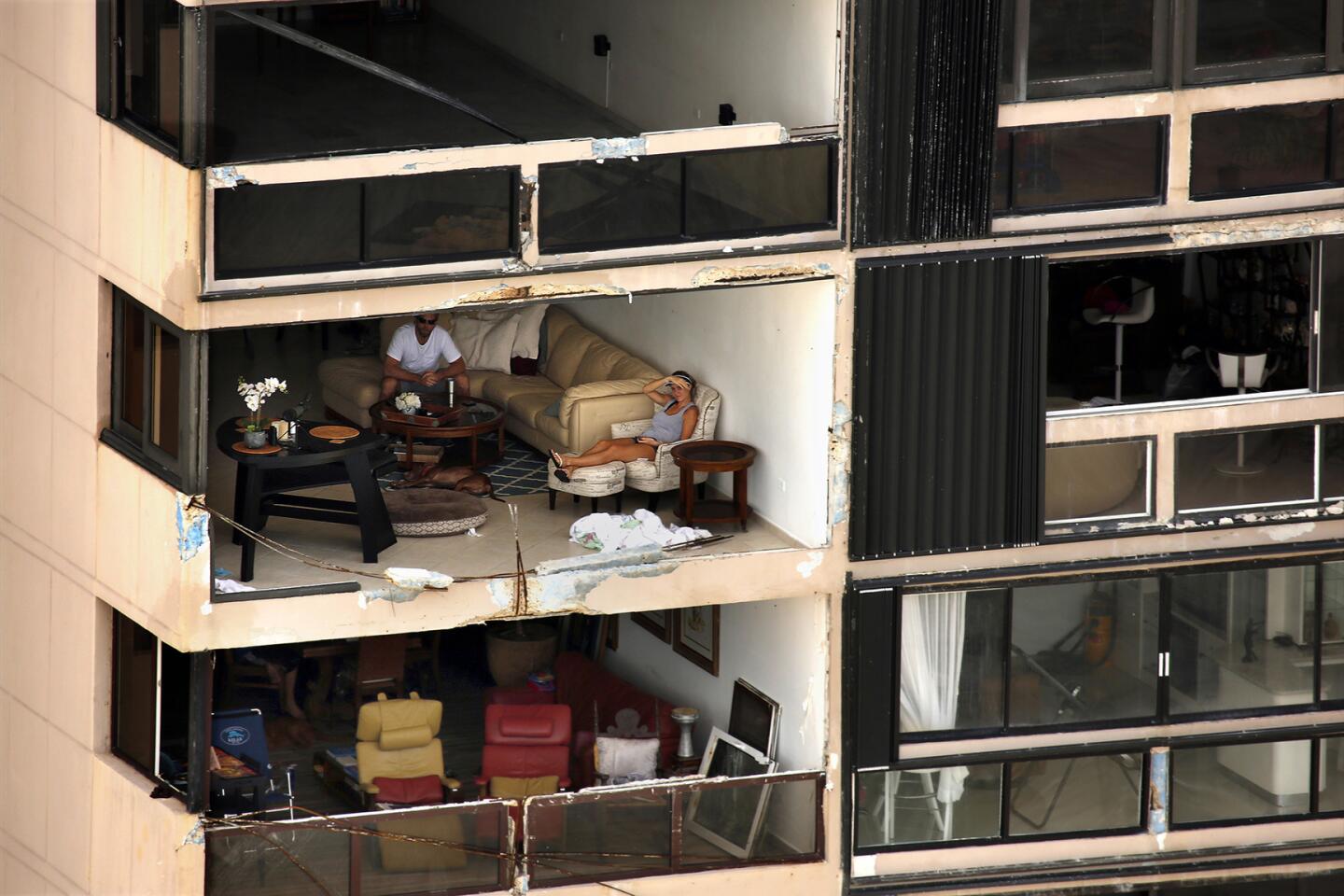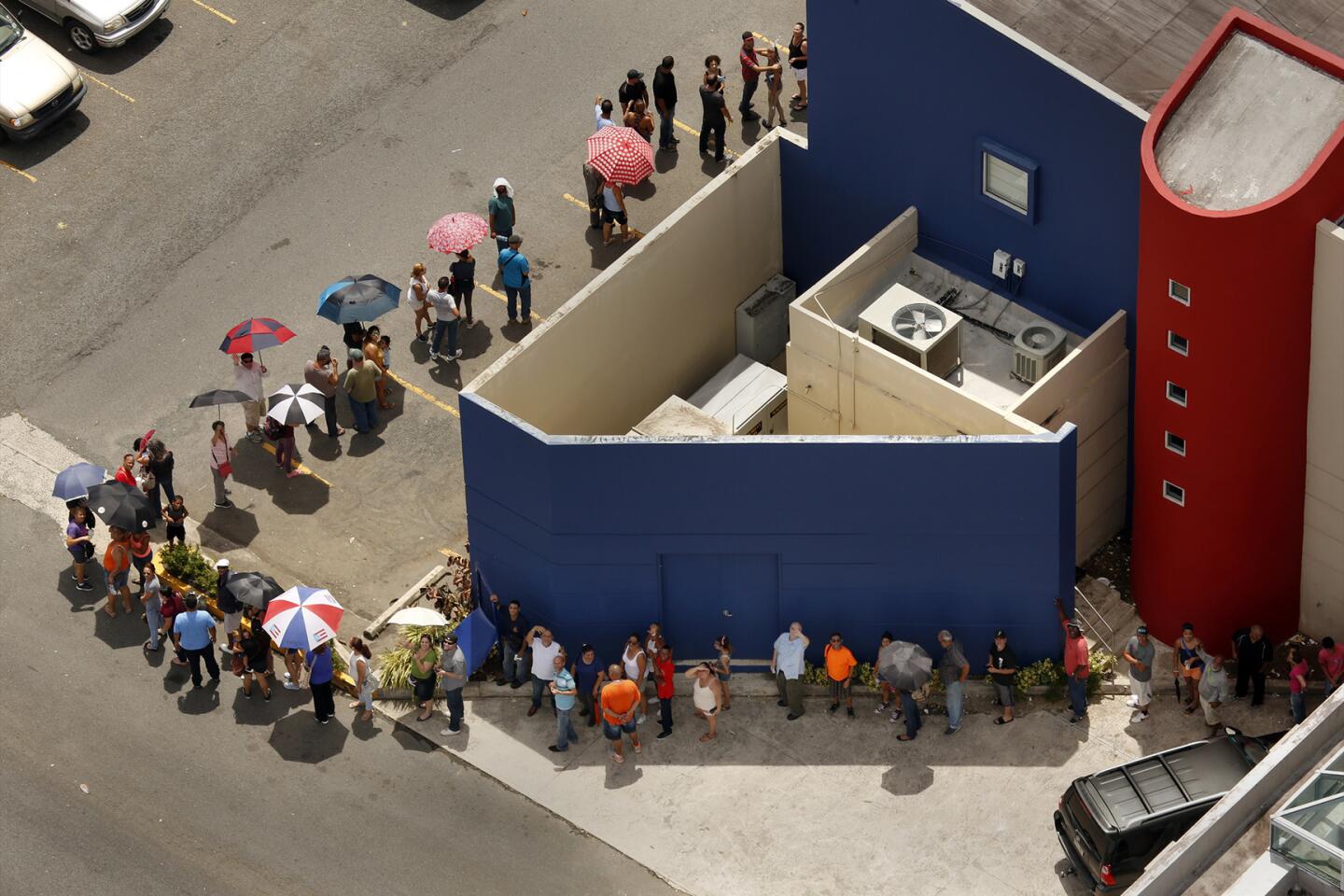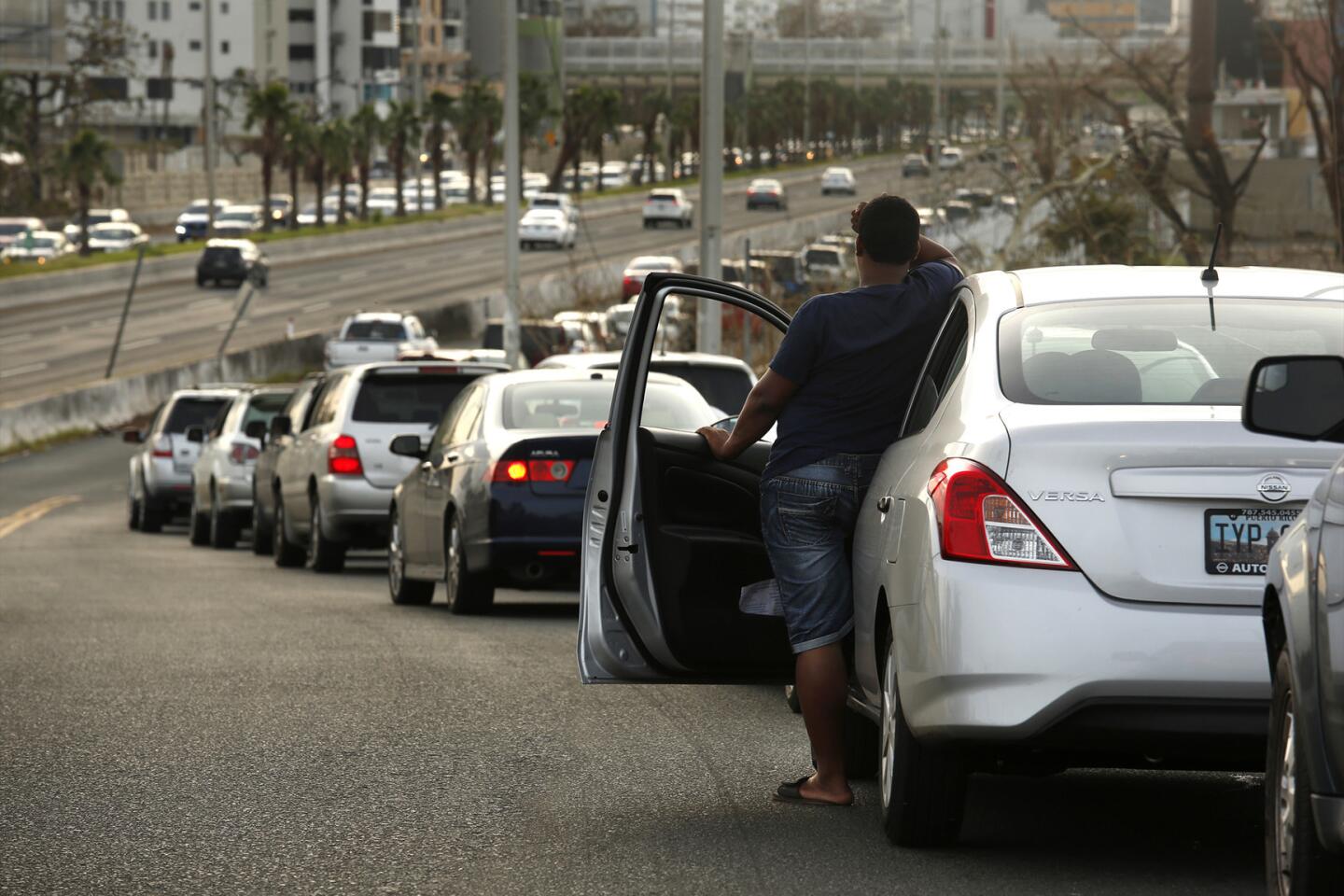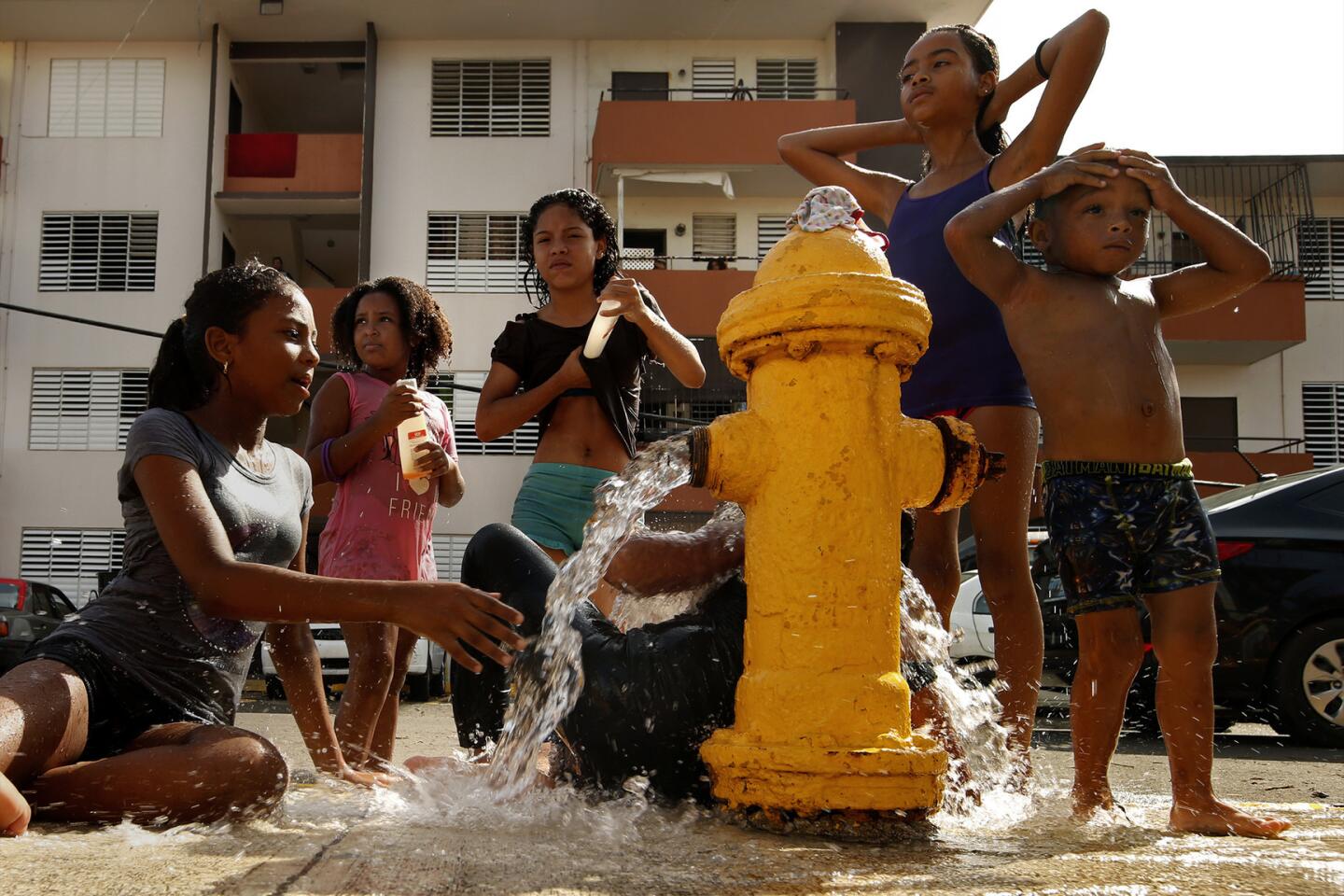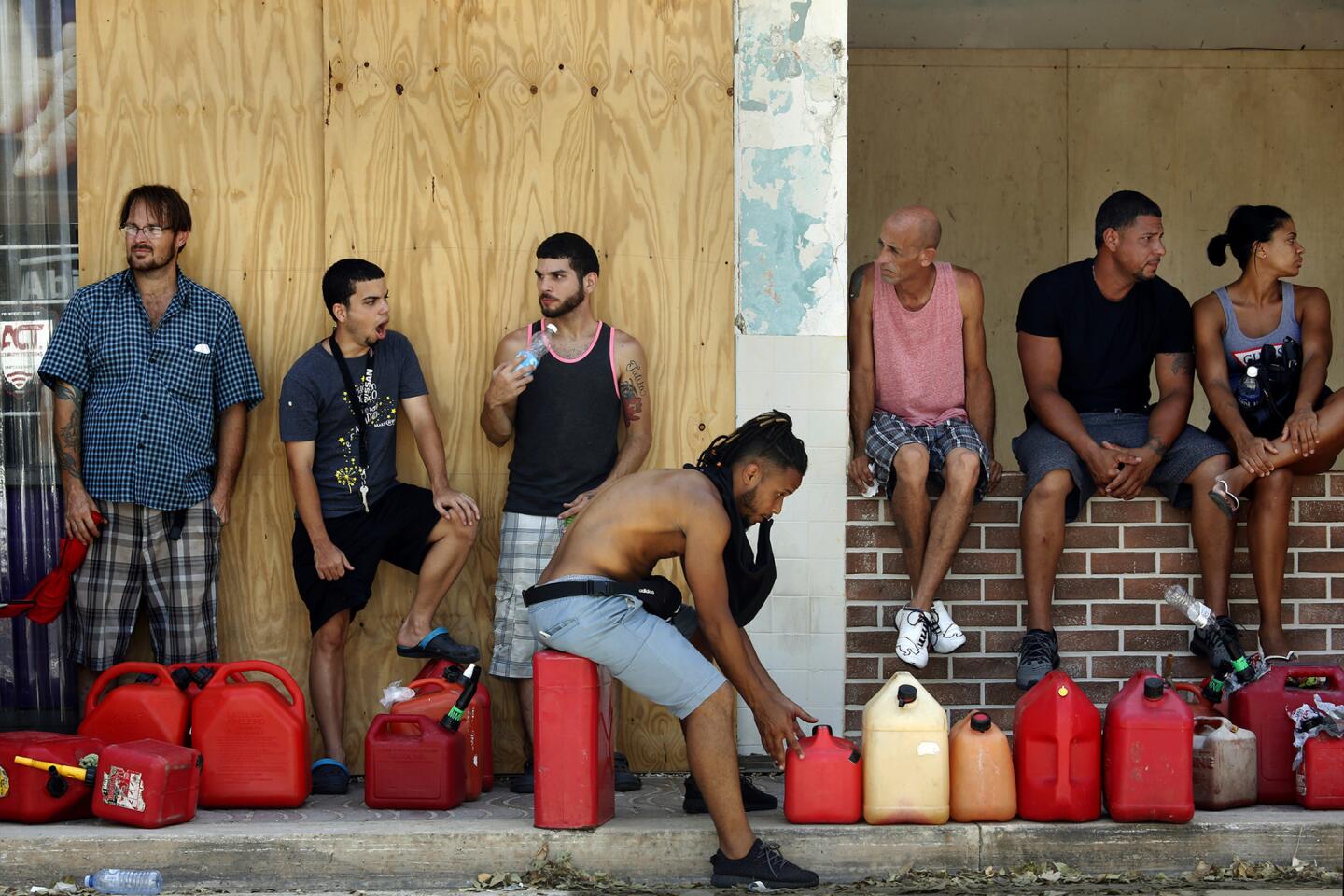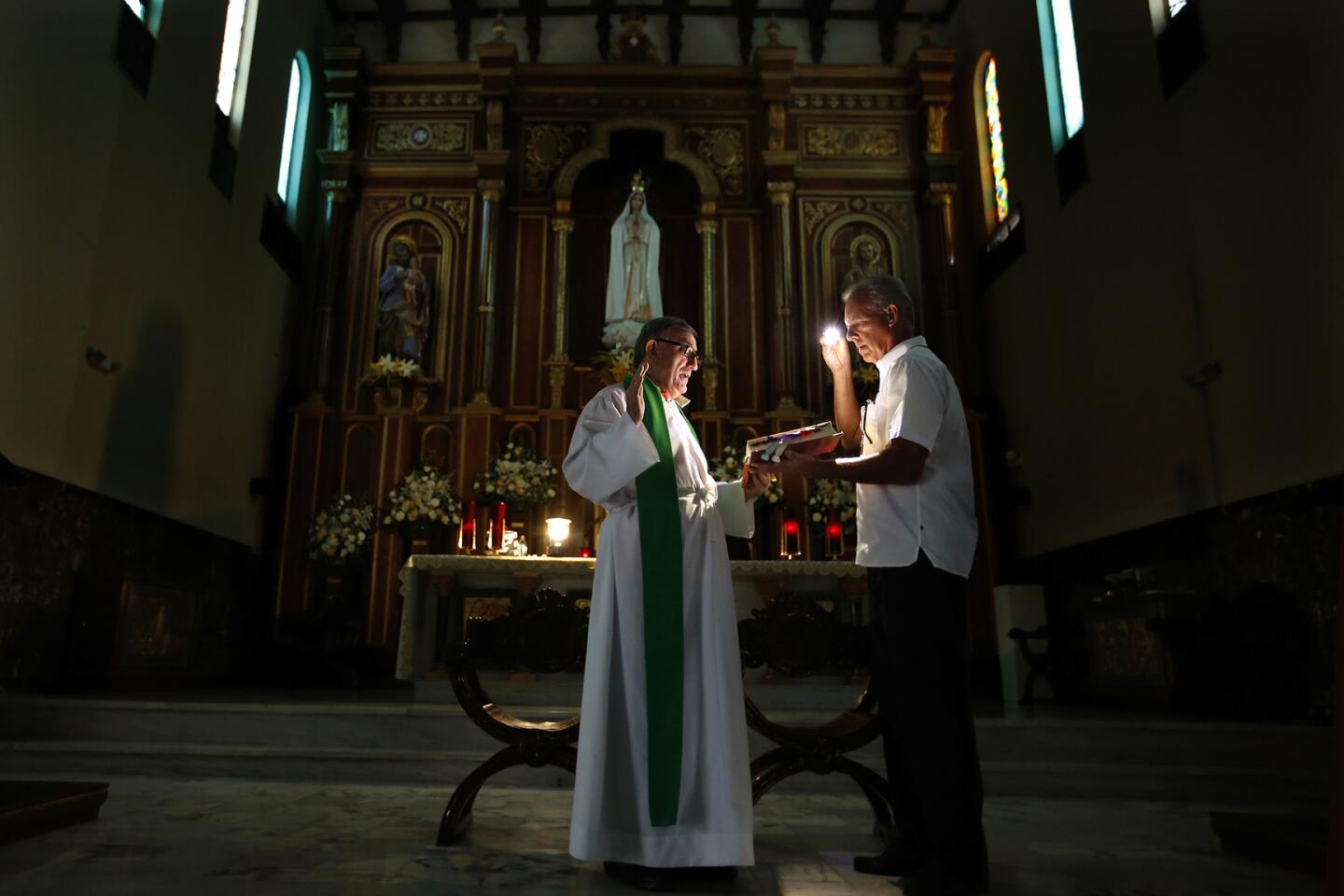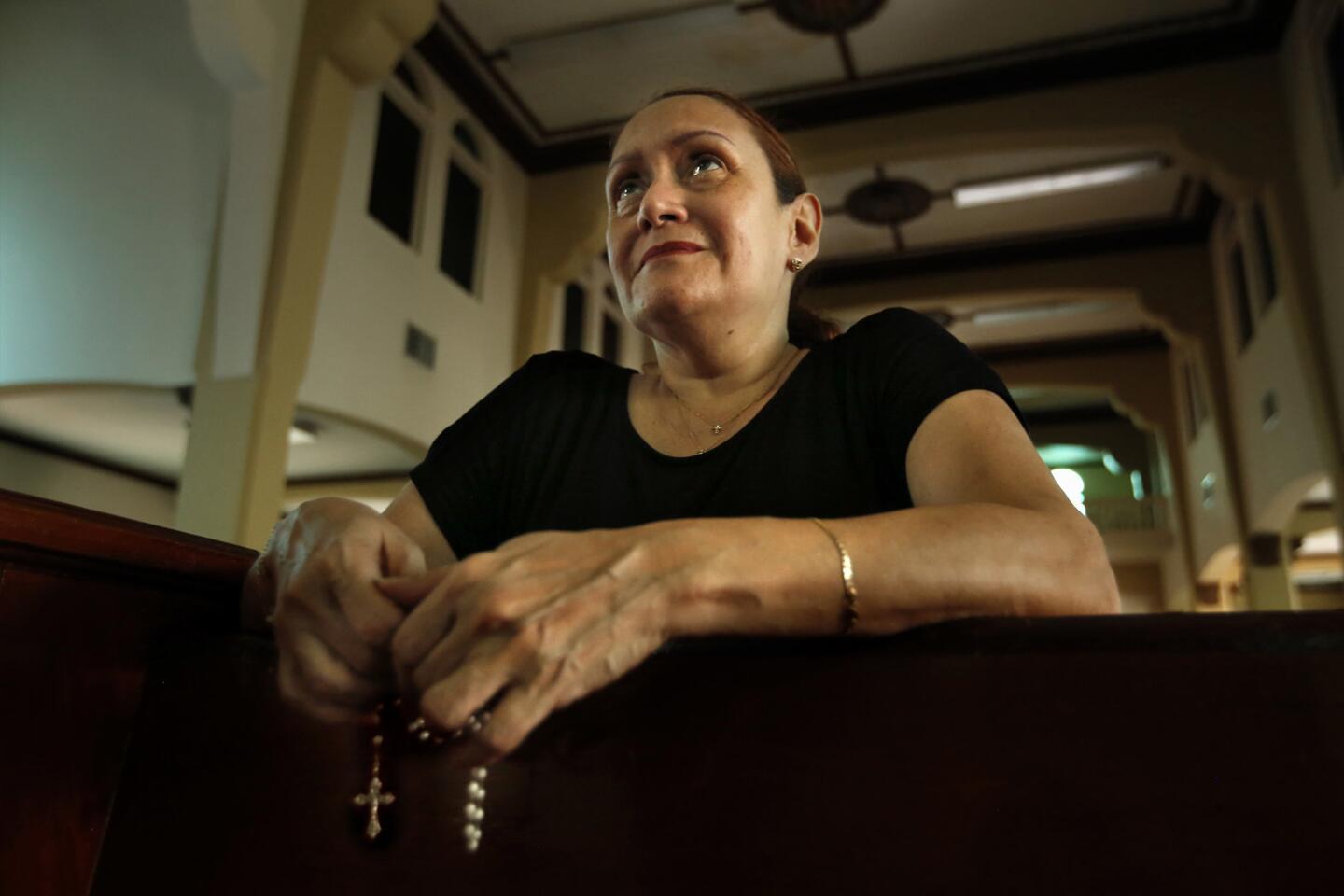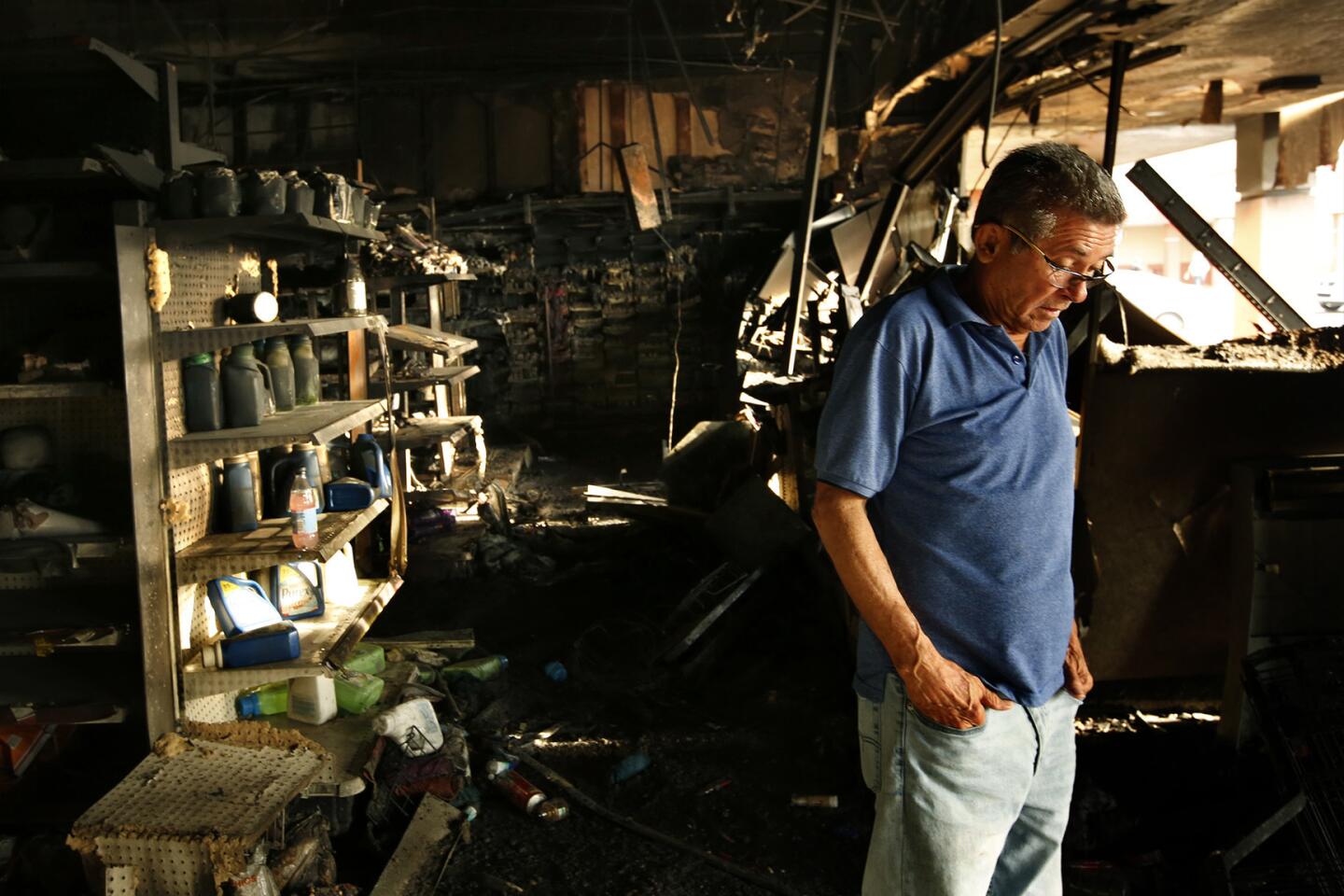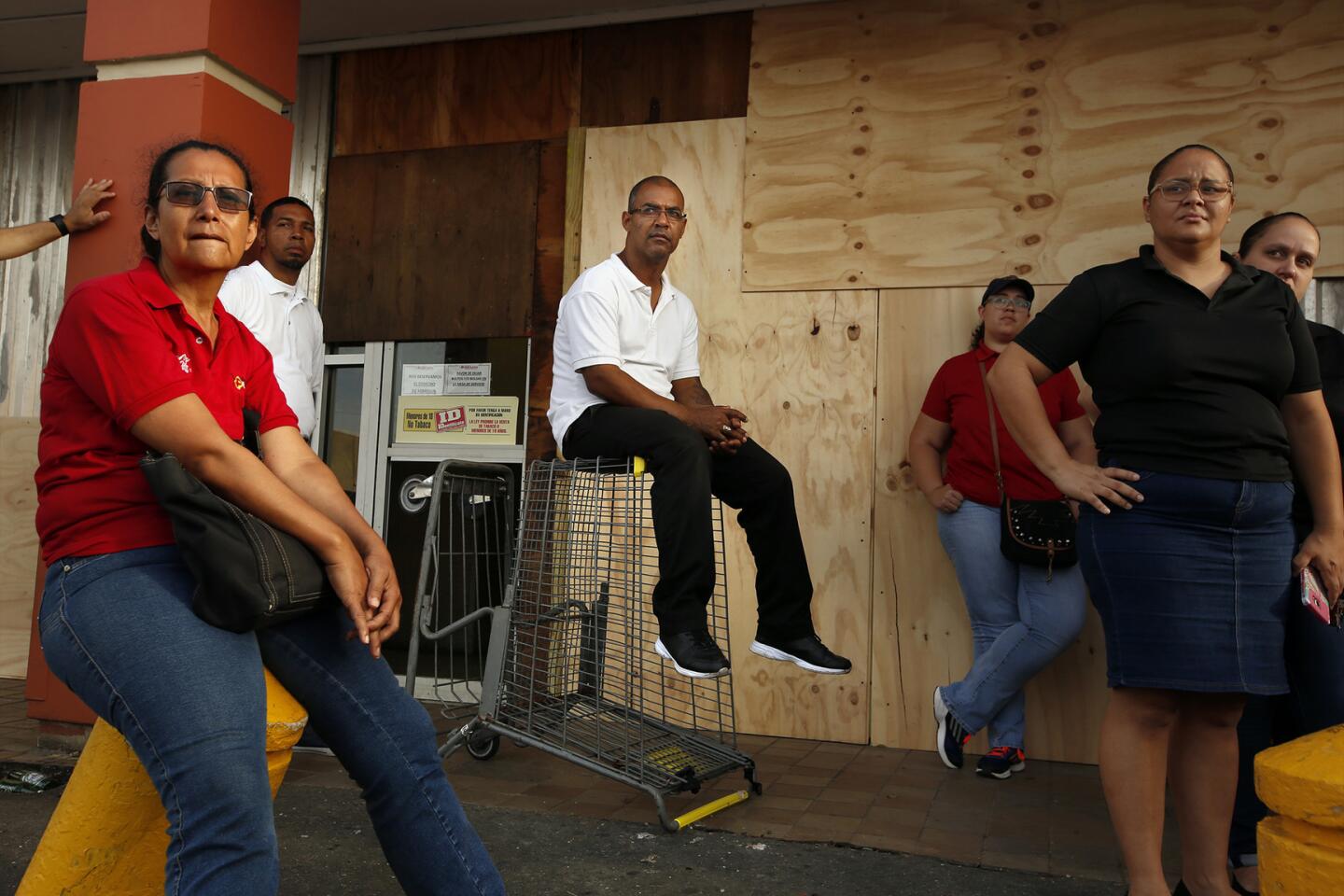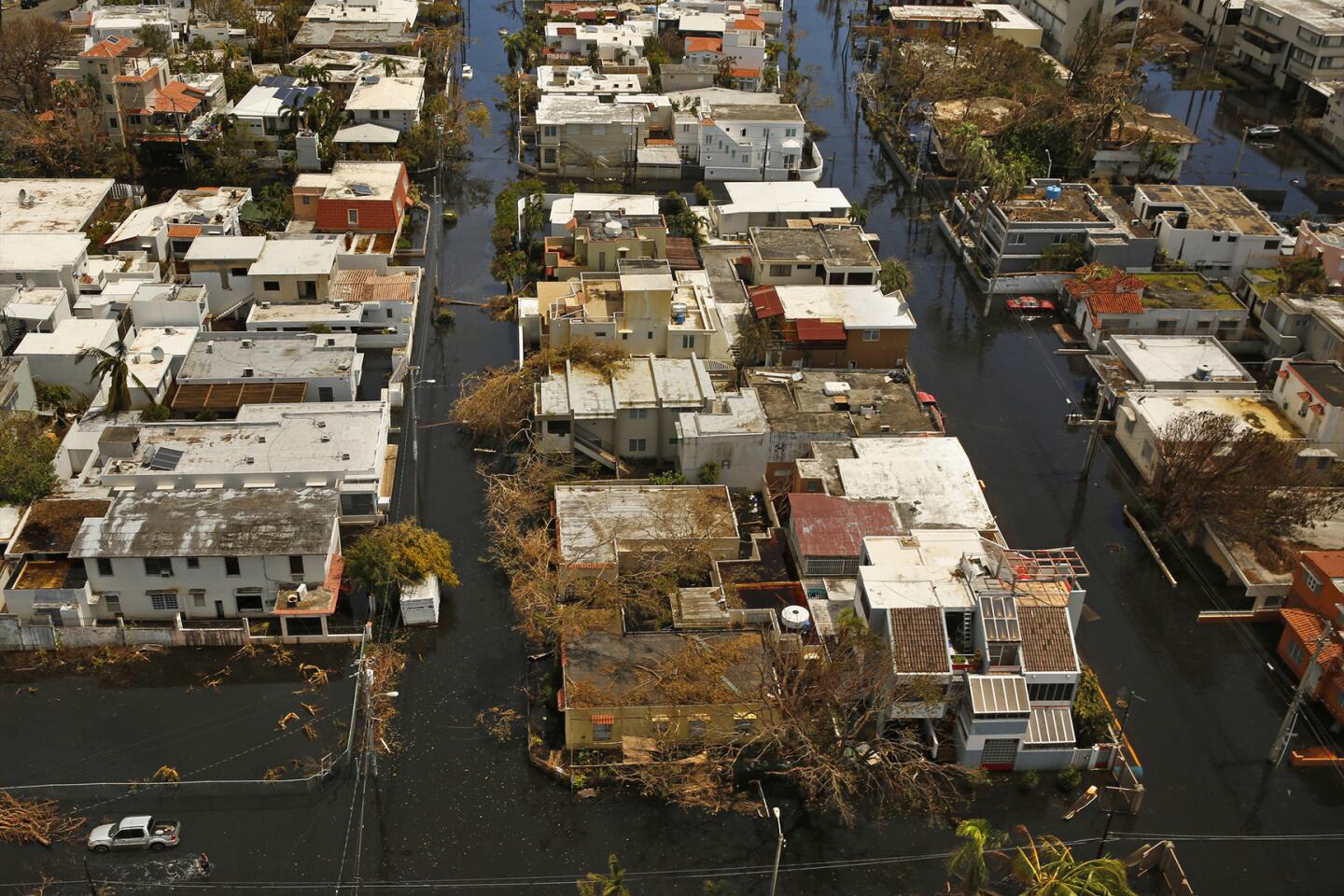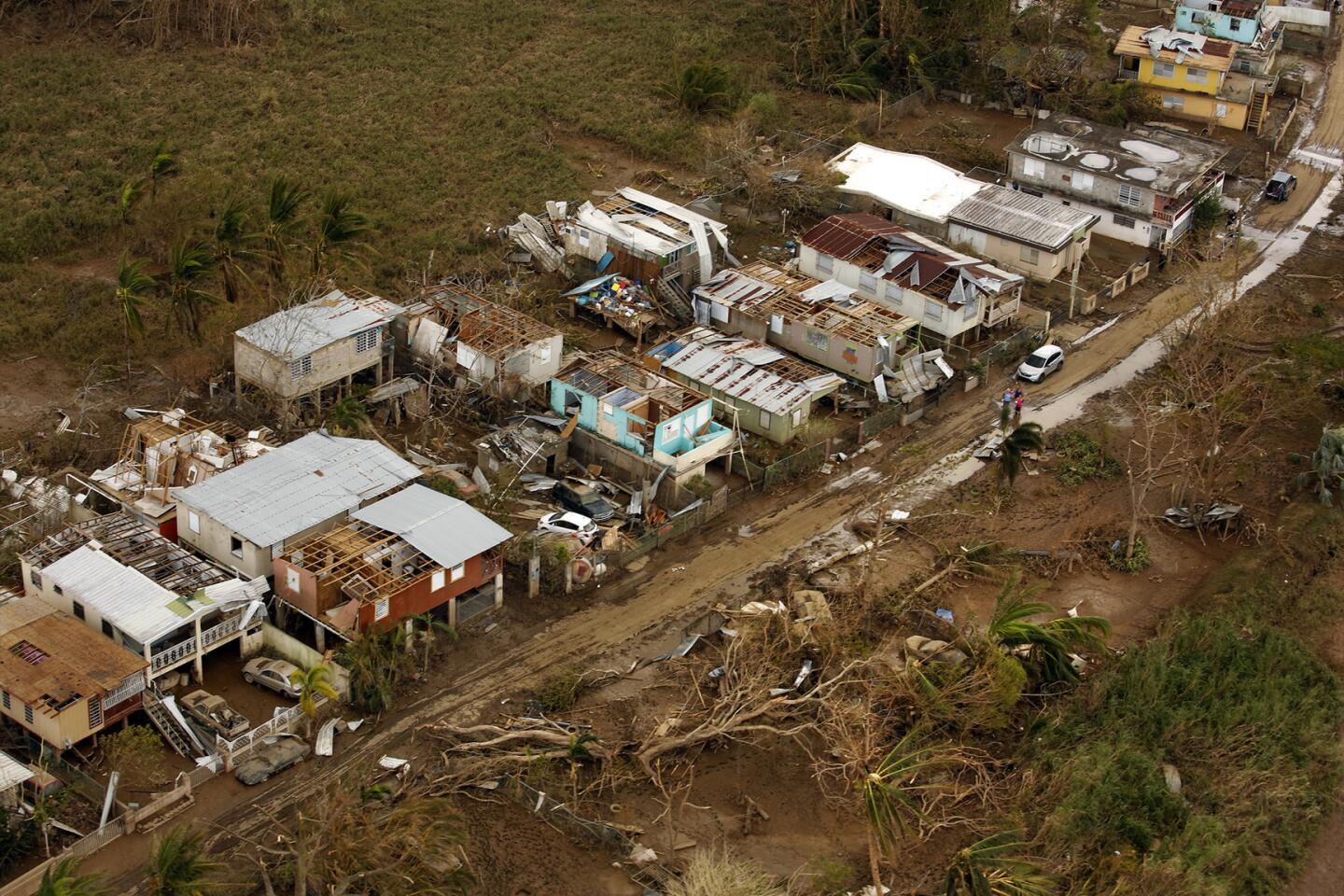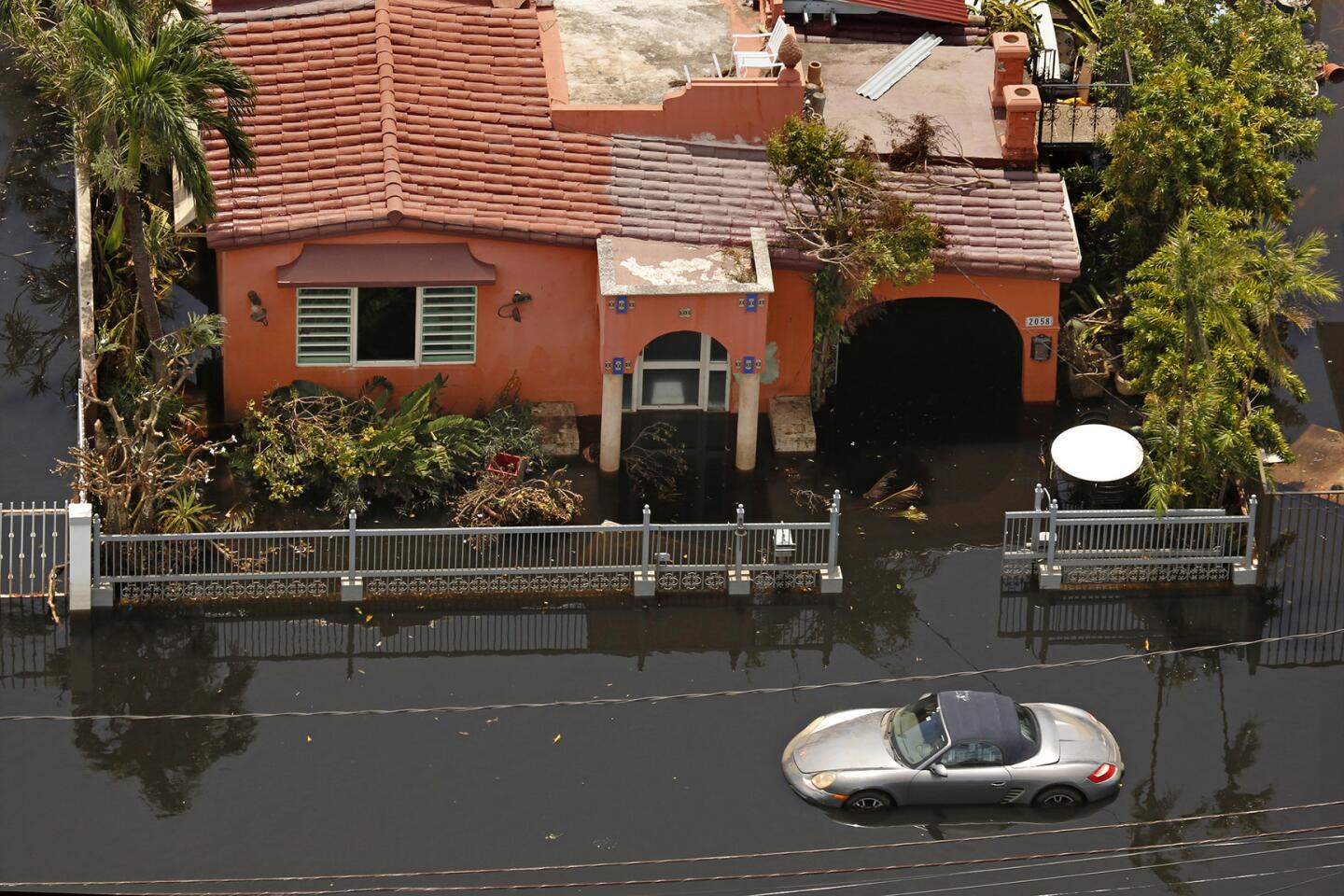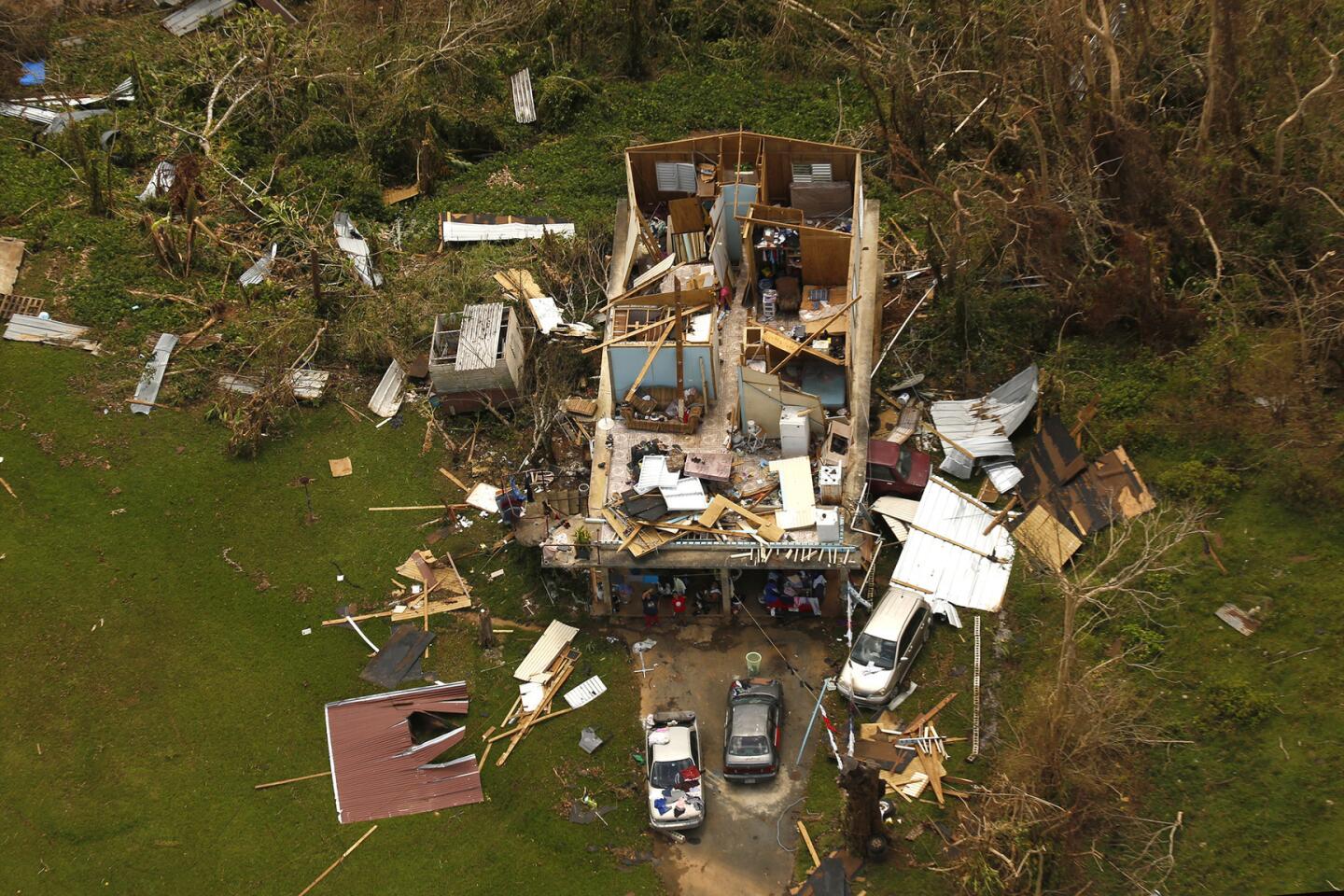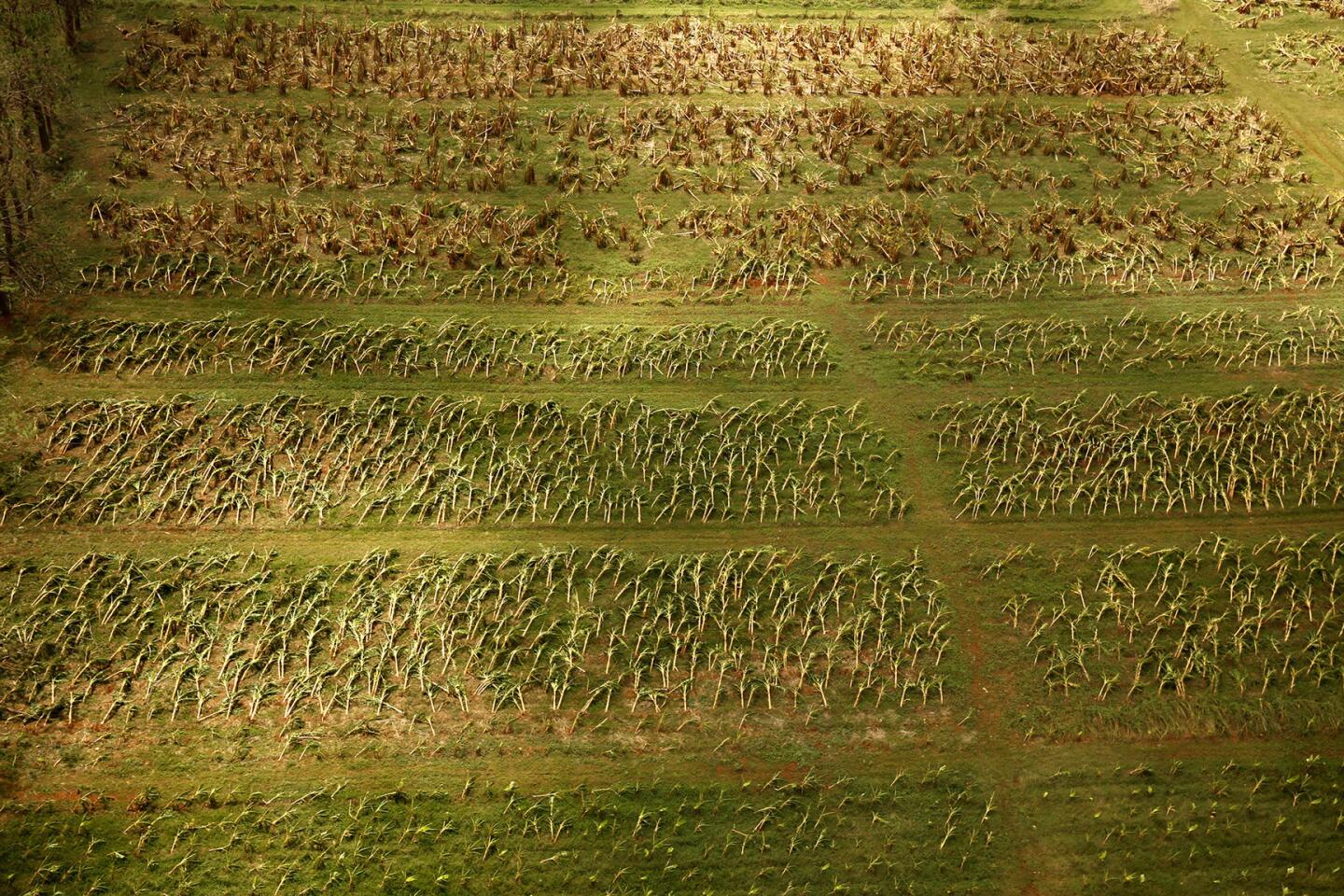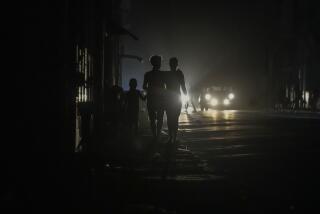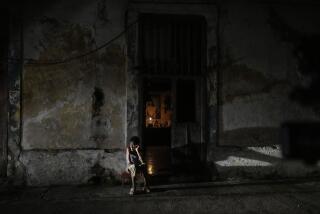In San Juan, ‘the aftermath is almost more horrific than the actual passing of the hurricane itself’
Reporting from San Juan, Puerto Rico — Here at the massive Luis Llorens Torres public housing complex on the east side of this wrecked capital, black floodwater stood stagnant as heaps of garbage grew higher.
“We have a car, but we can’t go anywhere because of the water,” said one resident, 63-year-old Juan Lopez, a retired security guard who was subsisting on spaghetti that he cooked on a propane stove, canned sausages and cookies.
Diabetic and disabled, he had enough food for three more days. His $888 monthly Social Security check — his only source of income — was supposed to arrive Wednesday, but with the banks still closed, he was not sure he would be able to cash it.
“They say they will open tomorrow, but who knows?” Lopez said, sitting shirtless in his humid apartment.
The lives of the people in San Juan are now divided into two periods: before Hurricane Maria and after.
The after is the unknown. It’s been nearly a week since the storm — the most powerful to strike in the island in 85 years — pummeled this city of 350,000. Most places still have no electricity, no running water, no working telephone lines or cell towers.
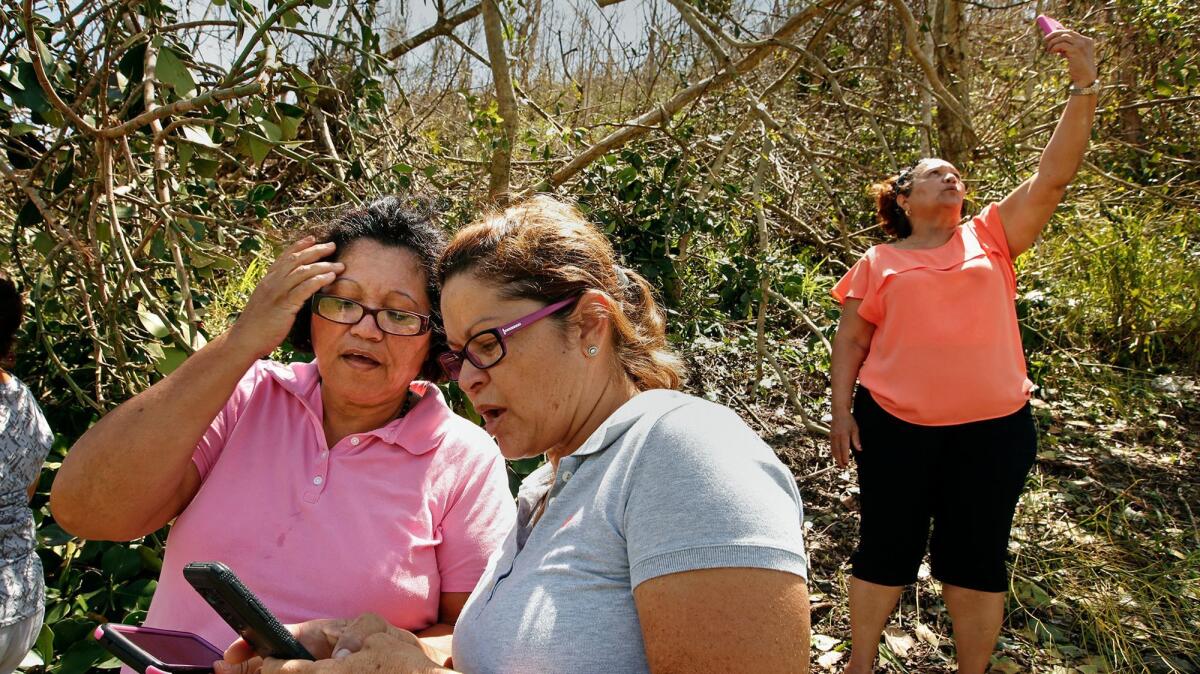
The death toll was unlikely to remain at 16 as residents confronted sweltering heat and continued scarcities. Lines — for gasoline, for propane, for food, for water, for cash — stretched for blocks, sometimes miles. Some people skipped the lines and looted what they could.
“What we’re now seeing is that the aftermath is almost more horrific than the actual passing of the hurricane itself,” said San Juan Mayor Carmen Yulín Cruz. “The death toll is rising. People have still not communicated. And in San Juan, you’re seeing what I’m calling ‘urban refugees.’”

“What we’re now seeing is that the aftermath is almost more horrific than the actual passing of the hurricane itself,” said San Juan Mayor Carmen Yulín Cruz. “The death toll is rising. People have still not communicated. And in San Juan, you’re seei
“We’re doing our damnedest to get to them, especially the elderly that are left locked up in their buildings with no food, no electricity, no medication, no medical attention,” she said. “We’re canvassing them one by one.”
A dusk-to-dawn curfew imposed after the storm remained in place.
The city was working to keep two hospitals supplied with fuel for their generators. Two emergency dialysis machines were in place, but it was far from clear that patients could reach them.
“This is something that has to be figured out quickly,” the mayor said. “This is a life-or-death situation.”
She said they have received help from “the diaspora of Puerto Ricans” in the U.S. mainland and beyond. Her message to her staff Monday: “Push on.”
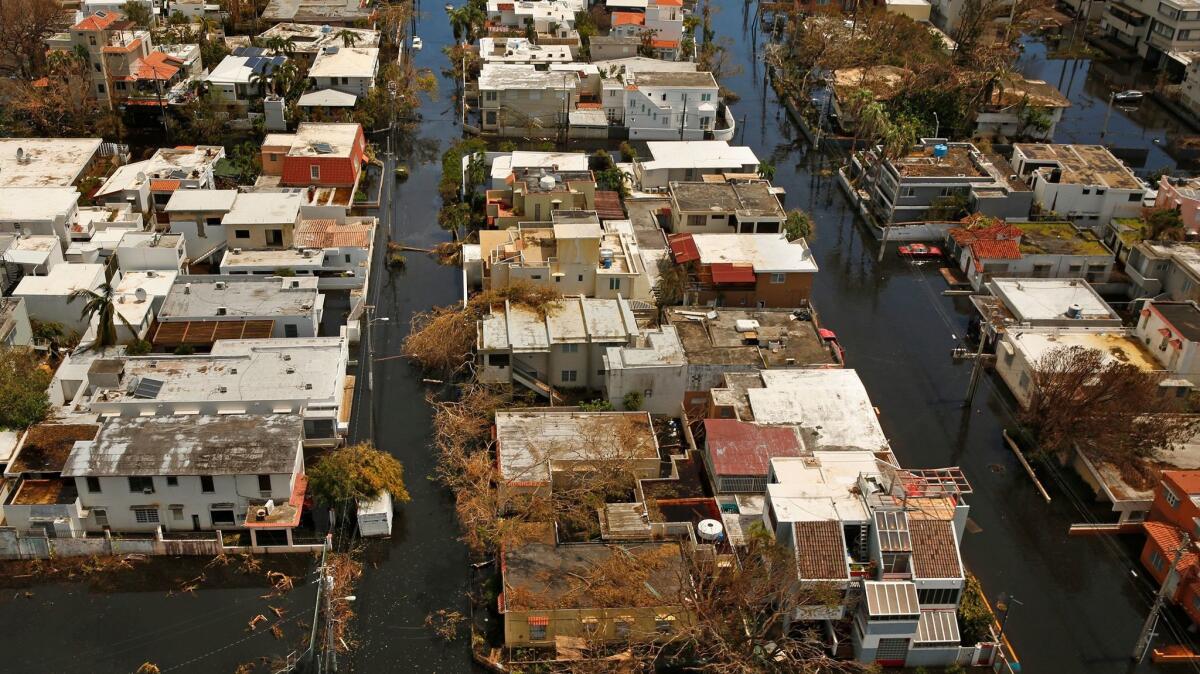
In a series of tweets late Monday, President Trump wrote that “Puerto Rico, which was already suffering from broken infrastructure & massive debt, is in deep trouble” but that “Food, water and medical are top priorities — and doing well.”
That did not seem to match the mood on the streets. If there is a dominant sentiment in the capital, it is resignation.
Lidia Rivera, 81, who sat on a neighbor’s back stoop at the housing complex, wolfing down beans and rice, said she wasn’t expecting any help from the Puerto Rican or federal governments.
“FEMA is not coming to Llorens Torres!” she said.
The mayor had visited, but no one had seen federal emergency crews or utility workers.
Ramona Ayara, 60, sat in curlers next to a trash heap soaked in the floodwater and made a prediction: “People are going to get sick from that black water.”
A few blocks away, Eddy Sarita, the owner of the local market, Jupiter Superstore, was trying to mop up the receding floodwater and decide whether to stay in Puerto Rico or move back to the U.S. mainland.
Sarita feared many of his customers were agonizing over the same question.
“The more time without electricity, the more people will leave the island,” said Sarita, 67, who spent years in New York City and has two children and three grandchildren in Orlando. “The flood I can deal with, but without electricity, there’s no business.”
Even leaving — like everything in San Juan post-Maria — required a long wait. At the airport, scores of passengers were forced to camp out for days, sleeping in the terminal with their children and pets as they awaited relief flights.
Edmary Gonzalez said she was not returning any time soon. After losing her roof and spending nearly a week in a shelter, 20-year-old Gonzalez was headed to Boston with her 1-year-old daughter and 3-year-old son to join family.
Ramon Flores, 59, had been waiting four days to return to Chicago and expected to spend Monday night sleeping on the terrazzo floor again, amid barking dogs and crying children.
“It’s been chaos,” he said.
He had come to Puerto Rico before the storm to visit family, only to see their house destroyed.
At Nuestra Señora de Fatima Catholic Church in the Hato Rey neighborhood on Sunday, the Rev. Elias Lorenzana posted a sign promising Mass, “God willing.” About 40 people gathered to worship in the sweltering sanctuary.
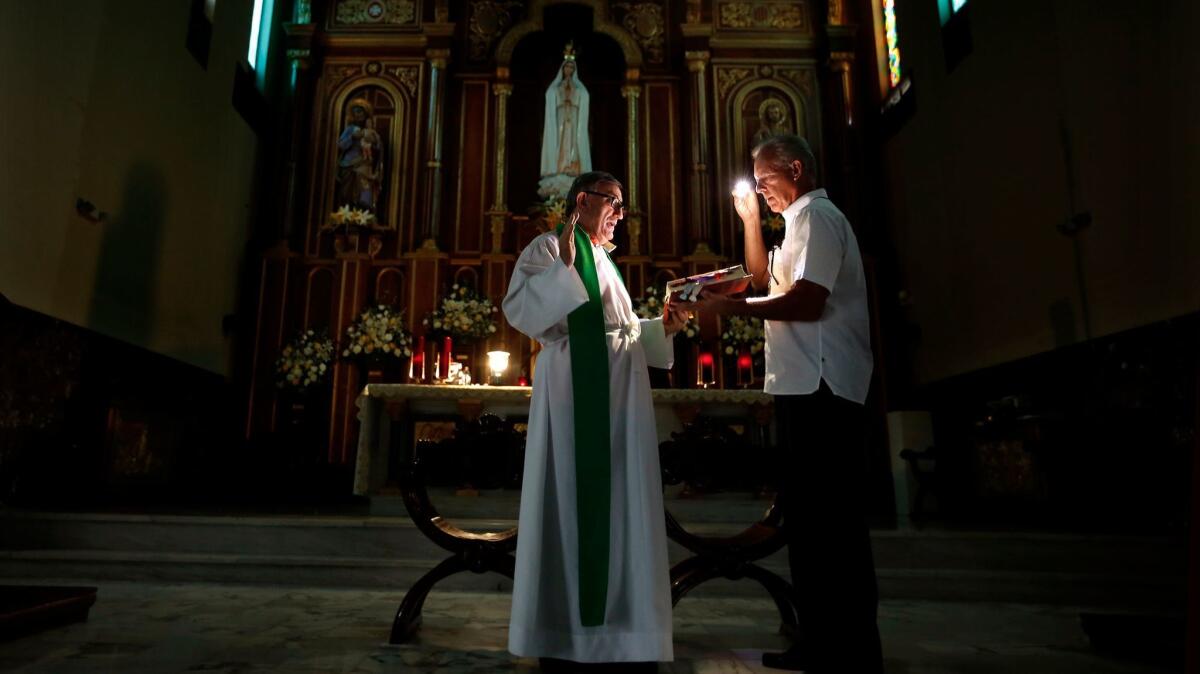
With no electricity, some used flashlights to read from the bible. Some came to give thanks for being saved from the storm, others to remember what they had lost.
Daisy Nazario, 61, had come to mourn.
She had been nursing her twin sister Enid, who had uterine cancer and had taken a bad turn just before the storm.
On Saturday morning, Nazario left her sister’s bedside to deal with a storm-related leak in the roof. When she returned, Enid was dead.
It took hours for the family to find a funeral home able to take the body due to a backlog of people who still needed to be buried or cremated. That meant Nazario would have to wait to set a date for the funeral.
“This is how things are now,” she said, crying in her pew.
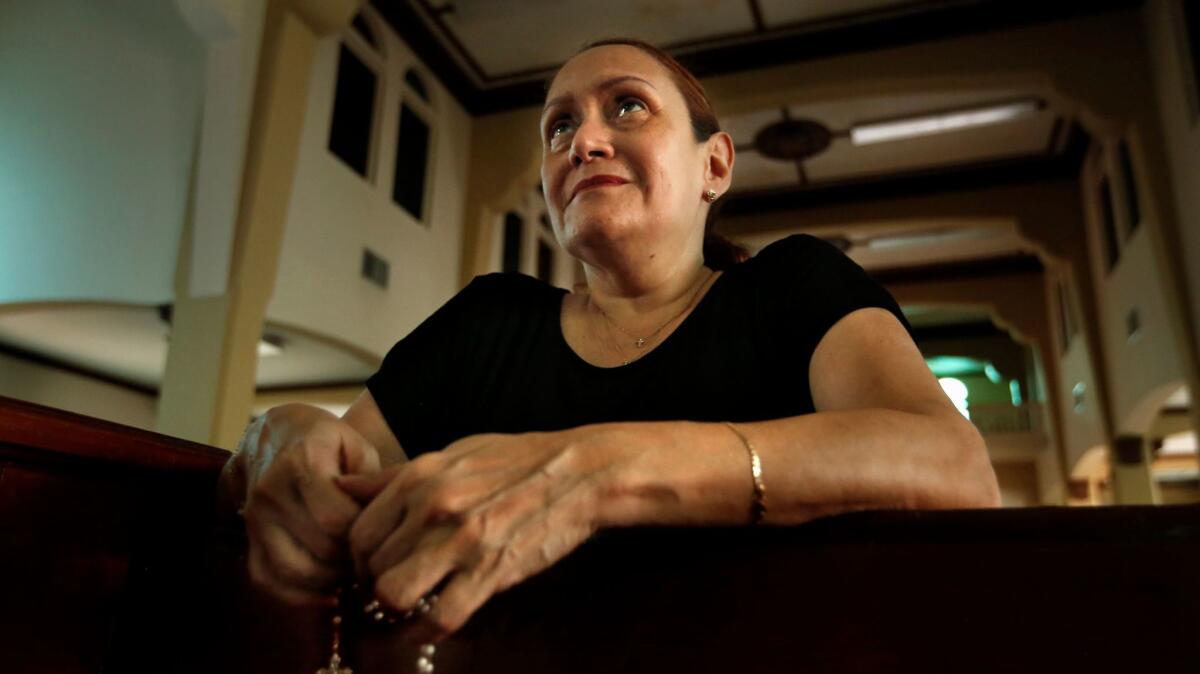
In places that had fared relatively well during the storm, shortages were starting to take a toll.
When the Reina de Castilla condominium directors gathered more than a dozen residents for the nightly emergency meeting Sunday, they were finally in agreement: They had to conserve fuel for the generators by cutting back air conditioning and appliance use.
“There was a change,” said Cesar Cerezo, 61, a lawyer and vice president of the condo association. “People didn’t want to let go of their habits.”
“They were in denial. Now they are accepting reality,” said neighbor Josue Rivera, 75, who owned a supermarket and lost a second house and a boat in the hurricane.
Police patrolling the Plaza Loiza strip mall Monday morning said they had arrested four men in connection with break-ins at a Walgreens, laundromat, gas station, restaurant and grocery store.
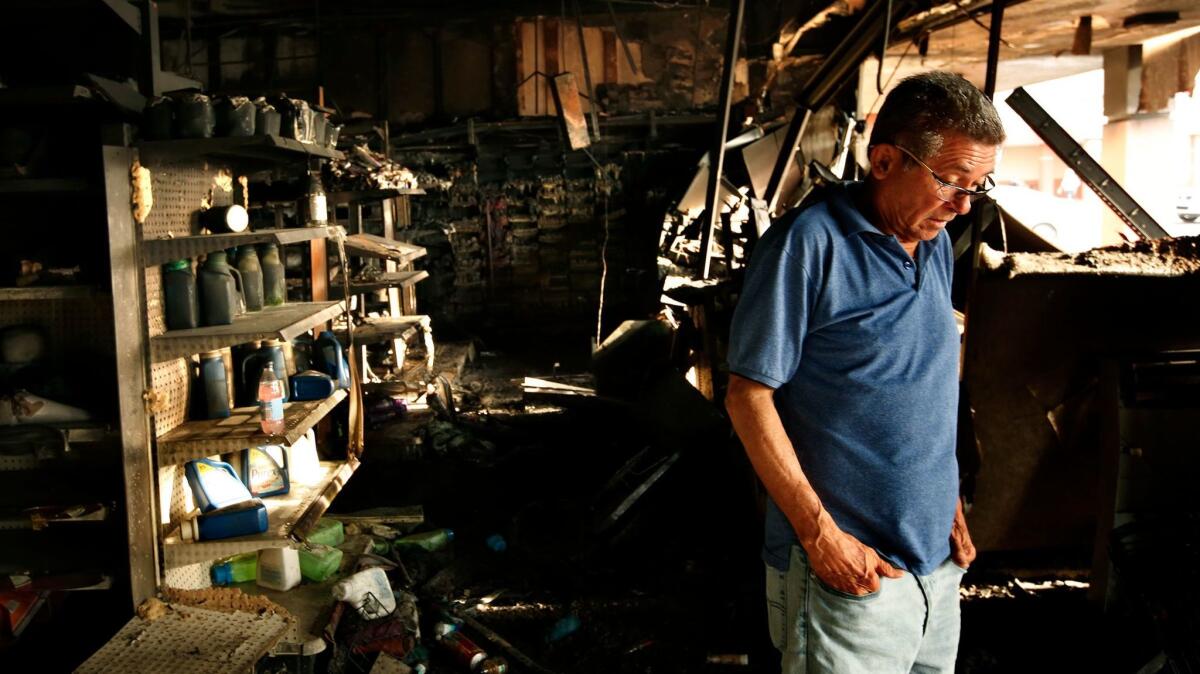
The Walgreens had been set on fire. The suspects were taken to a temporary holding area because the jail had flooded.
“The people are desperate,” said Irving Velez, deputy manager of the looted grocery store.
About 40 workers, nearly half the store’s staff, showed up Monday, most in uniform. Managers put them all to work cleaning up. They hugged and exchanged storm stories.
“On the island, we still have sections where we have that bond. You don’t know somebody, but you’re doing the same thing,” Velez said.

Christina Amador, a 26-year-old medical student, spent nearly five hours in line for gas in San Juan. ”Puerto Ricans, we’re just always friendly to each other,” she said. “But in times of crisis, that’s when we become a real family.”
Lines for gasoline were so long that people staked out spots before dawn in lawn chairs with umbrellas and waited for hours in the heat.
“We’re getting burned, we’re hot, we don’t have water,” said Christina Amador, a 26-year-old medical student whose tank was nearly empty. “We’re doing the best we can.”
Amador worried what would happen this week. Officials said 80% of the island would have gas by Tuesday. But what if it didn’t?
She said neighbors afraid of thieves started tying down their generators or using them inside, despite the danger of inhaling carbon monoxide.
“The looting is going to get worse,” she said. “People are going to start targeting the most vulnerable.”
To read the article in Spanish, click here
Twitter: @mollyhf
ALSO
After Hurricane Maria, ‘Puerto Rico isn’t going to be the same’
Trump team’s travel perks are costing taxpayers mightily. Here’s why there’s little outrage
Latest GOP Obamacare repeal effort on verge of collapse as third Republican comes out against bill
More to Read
Sign up for Essential California
The most important California stories and recommendations in your inbox every morning.
You may occasionally receive promotional content from the Los Angeles Times.
